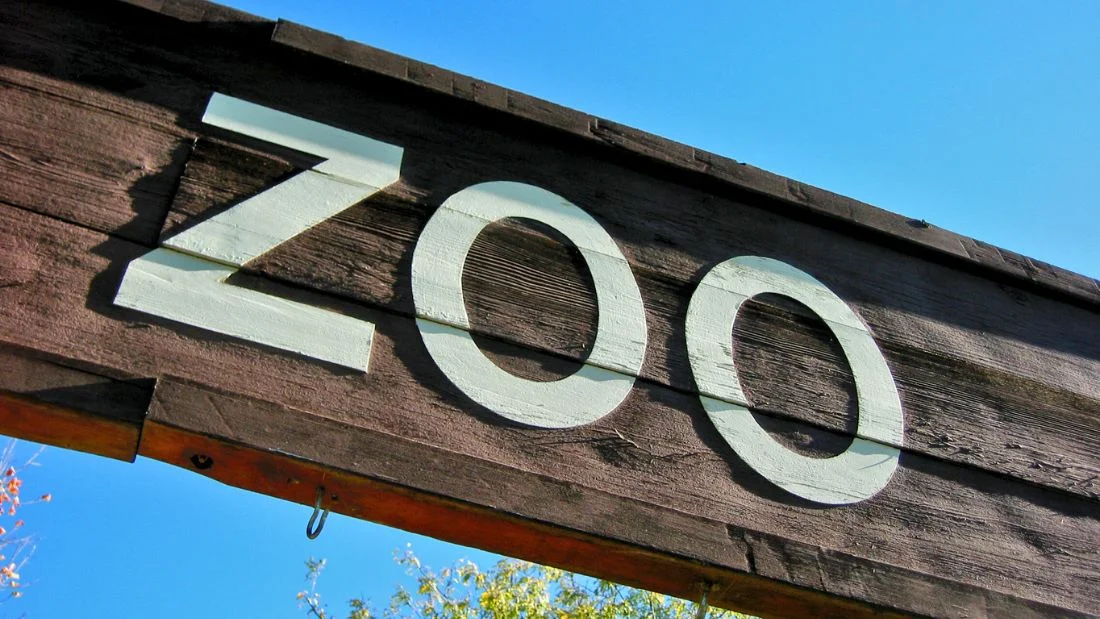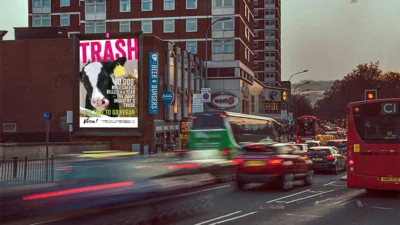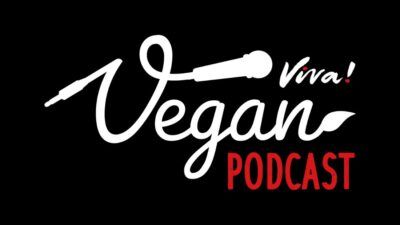Zoos Exposed … ‘conservation’ in captivity falling short

As a child, the zoo felt like a magical world – lionesses lounging under dull British skies, laminated tanks of rare reptiles and flurries of exotic birds I had only ever seen in books.
I was raised on wildlife documentaries, particularly those featuring Steve Irwin, whose enthusiasm for animals only deepened my love for the natural world. The zoo seemed like the perfect place to connect with these animals, but I never stopped to consider how they might feel, living behind glass indefinitely.
As I learnt more about the realities of captivity, my perspective changed. What once appeared as harmless began raising more ethical questions. Zoos claim to protect endangered species, educate the public and conserve the natural world – but are they really helping wildlife or just perpetuating a system that prioritises profit over meaningful conservation?
Zoos have long presented themselves as guardians of wildlife conservation, promoting carefully curated exhibits that promise rare glimpses into the animal kingdom. With over 300 zoos in the UK alone, and more than 10,000 worldwide, it’s easy to believe they play an essential role in protecting wildlife. However, behind this polished image lies a troubling truth – captivity compromises animal welfare, disrupts natural behaviours and contributes little to genuine conservation efforts. If we are truly committed to protecting wildlife, we must recognise that zoos are simply profit-driven businesses capitalising on the ongoing sixth mass extinction.
The illusion of conservation
Zoos point to breeding programmes and reintroduction initiatives as proof of their commitment to saving endangered species. However, most animals in captivity are not endangered and only a tiny percentage of zoo-bred animals are successfully released into the wild. Instead, zoos focus on maintaining populations for public display. A review of 13 prominent zoos revealed that they housed just 3.5 per cent of species listed as threatened on the IUCN Red List – hardly a strong case for their role in conservation.
When zoo finances are examined, it becomes clear that their focus is not on conservation. While they may spend hundreds of thousands, if not millions, on exhibit refurbishments, visitor attractions and marketing, a very small portion of revenue is allocated to protecting species in the wild. While some zoos may contribute to conservation programmes, this typically represents only a small fraction of their total expenditure.
It’s estimated that less than three per cent of a zoo’s budget goes towards meaningful conservation efforts. Zoos are expensive to run, many are focused primarily on revenue generation and some zoos even continue to acquire animals from the wild. If the real aim is to protect wildlife, resources should be redirected towards anti-poaching initiatives, habitat preservation and sustainable population management in the wild.
Harsh reality of captivity
Although many modern zoos have moved away from traditional cages in favour of glass panels, moats, and larger enclosures, the fundamental problem remains: captivity can never truly replicate the freedom and complexity of the natural world. Even in large safari parks, animals still spend much of their time indoors, preventing them from engaging in natural behaviours. Many enclosures are designed to prioritise the visitor experience, not the well-being of the animals.
Effects of captivity on animals are well-documented, with investigations revealing a wide range of stress-induced behaviours, such as pacing, fur-plucking and self-harm – symptoms of a condition known as zoochosis.
Numerous British zoos and wildlife parks have been embroiled in scandals that highlight the ethical dilemmas of keeping animals in captivity. South Lakes Safari Zoo in Cumbria earned the title of ‘Britain’s worst zoo’ after nearly 500 animals died over a three-year period. Similarly, in 2018, Borth Wild Animal Kingdom in Wales reported the deaths of one in five animals due to poor care and management practices. The tragic death of a three-month-old red panda at Edinburgh Zoo, caused by fireworks on Bonfire Night, only underscores the challenges of providing a stress-free environment in densely populated urban areas.
Profit over protection
Young, charismatic animals are especially valuable for driving profit and there is often an emphasis on breeding programmes to produce a continuous supply of adorable infants. A recent example is Moo Deng, a pygmy hippopotamus born last July at Khao Kheow Open Zoo in Thailand. Her online fame not only quadrupled the zoo’s visitor numbers but also boosted local revenue by an estimated £24.5 million in four months. Young animals may draw crowds and boost ticket sales, but once they outgrow their cuteness, they often become surplus. Some may be relocated to other zoos, while others face darker fates – sold to private collections or even euthanised.
One infamous example is that of Marius the giraffe at Copenhagen Zoo, who was killed at just 18 months old. Despite being otherwise healthy, the zoo claimed that Marius’ genes were “too common” to be useful for breeding purposes. His death, conducted by shooting him in the head was followed by a public dissection, which lasted for three hours before his body was fed to the zoo’s lions. This sparked public outrage but Copenhagen Zoo defended the culling, claiming that it was necessary for genetic management. Marius’ case is just one example of the darker side of zoo operations, where animals are treated as commodities.
The failure of education
Another common justification for zoos is the claim that they help to educate the public on wildlife and their conservational needs. Observing an animal in captivity rarely offers meaningful insights into its natural behaviour or ecological role. A lion pacing in an enclosure bears little resemblance to its wild counterpart patrolling the savannah, and a polar bear lounging in a climate-controlled exhibit is a far cry from the harsh conditions of the Arctic.
Far from fostering a genuine understanding of wildlife, zoos often present a sanitised and misleading version of nature – one that reinforces the idea that animals exist solely for human entertainment rather than as part of intricate, thriving ecosystems.
Many zoos also claim to conduct research into animal behaviour and physiology but most of it is focused on the challenges created by captivity itself, rather than providing solutions to protect animals in the wild. Studies have shown that zoo visitors often leave with a superficial understanding of the animals and many fail to absorb key conservation messages. Immersive documentaries, ethical wildlife tourism, and direct investment in protecting natural habitats provide far richer, more accurate insights into the lives of wild animals.
A better future for conservation
Species are vanishing at an alarming rate due to habitat destruction, climate change and human activity. Despite their claims, zoos have done little to reverse this trend. Almost without exception, animals born in zoos will die in zoos. Holding wild animals in captivity is not only detrimental to their welfare but also a dangerous distraction from the threats they face in their natural habitats.
If we are serious about conservation and protecting the future of our planet’s biodiversity we must shift our focus away from captivity and towards real-world solutions, such as protecting natural habitats and funding anti-poaching patrols. The focus must shift to preserving animals where they belong – in the wild, not in enclosures designed for human entertainment. Only then can we genuinely claim to be acting in the best interests of the species we profess to protect.







